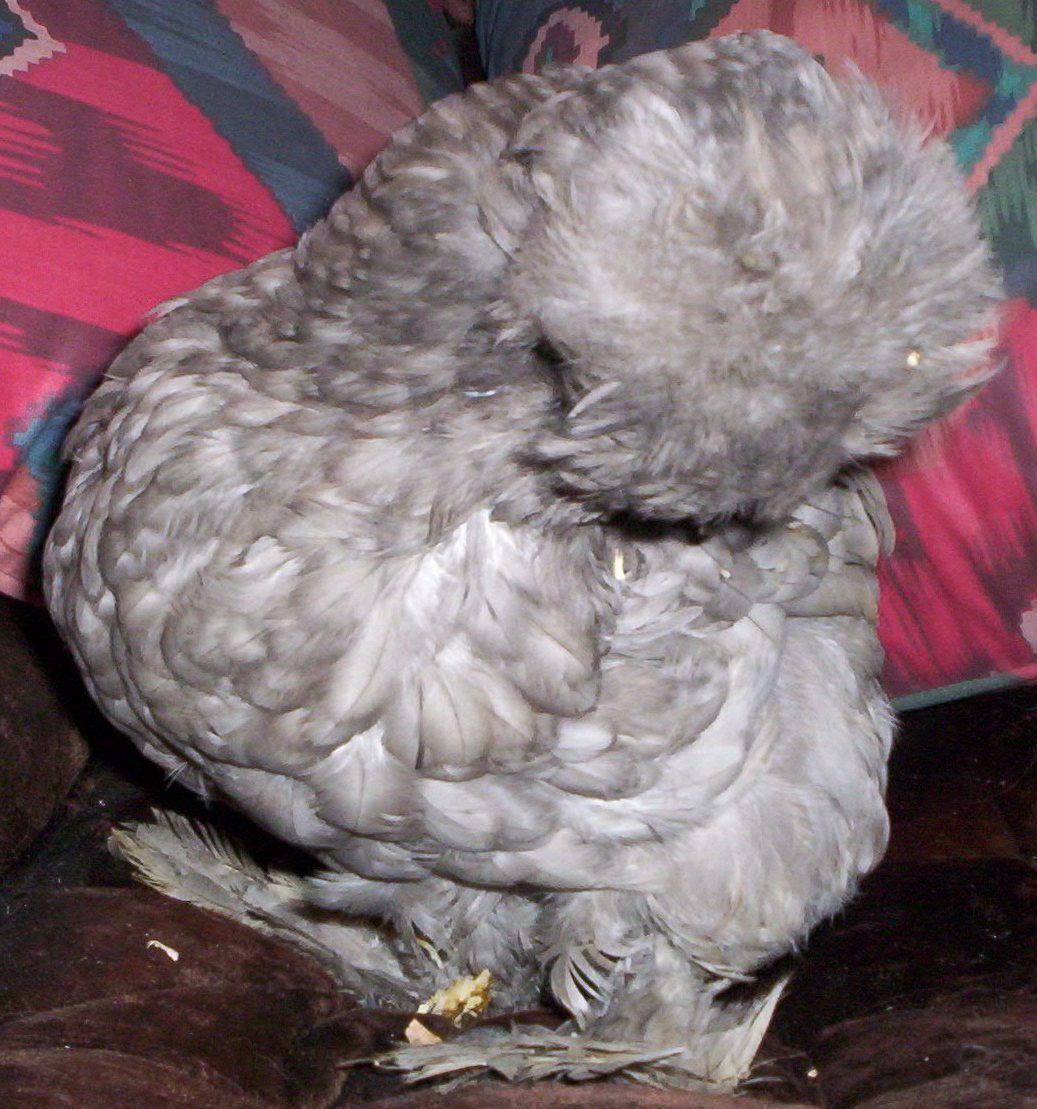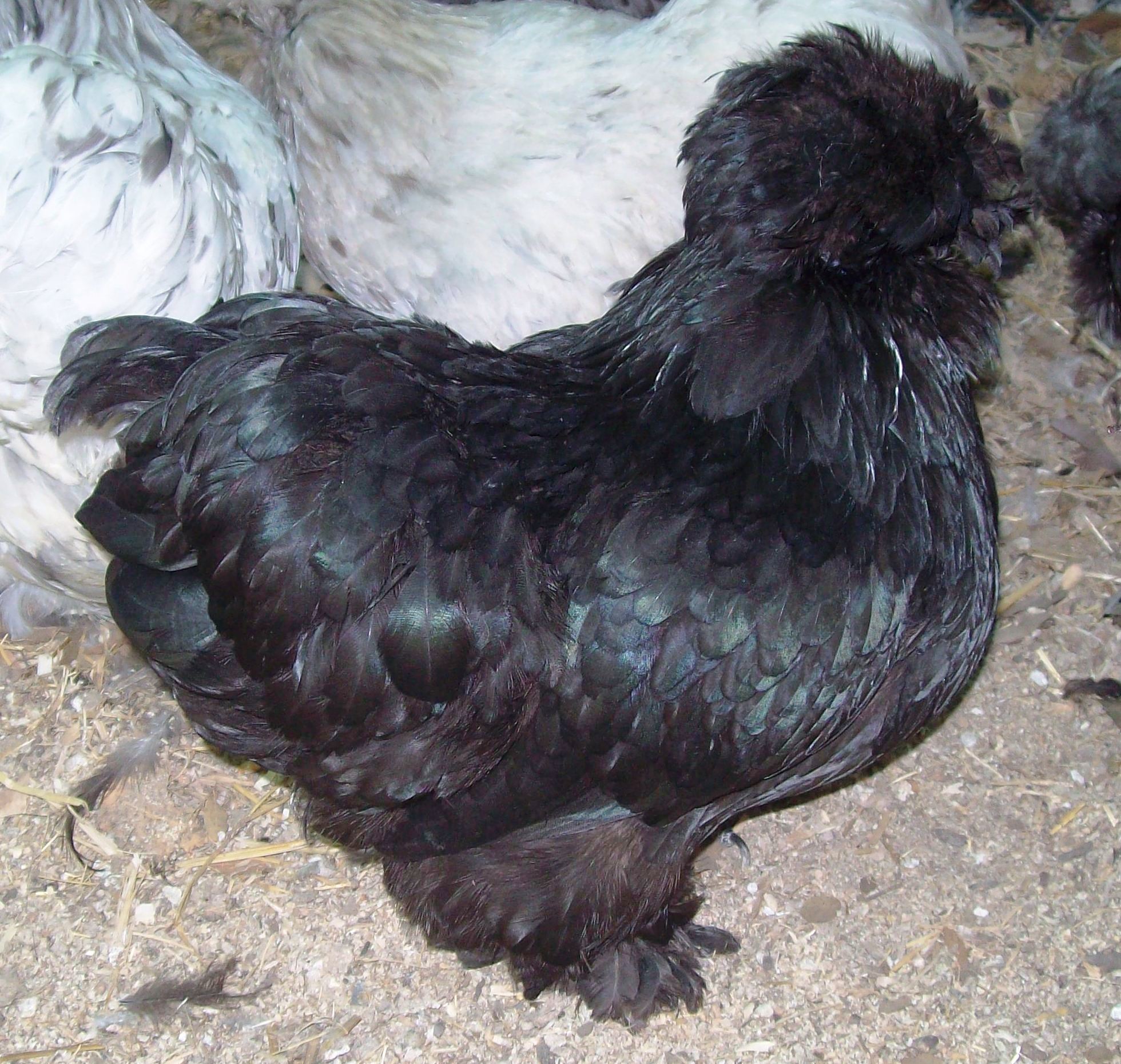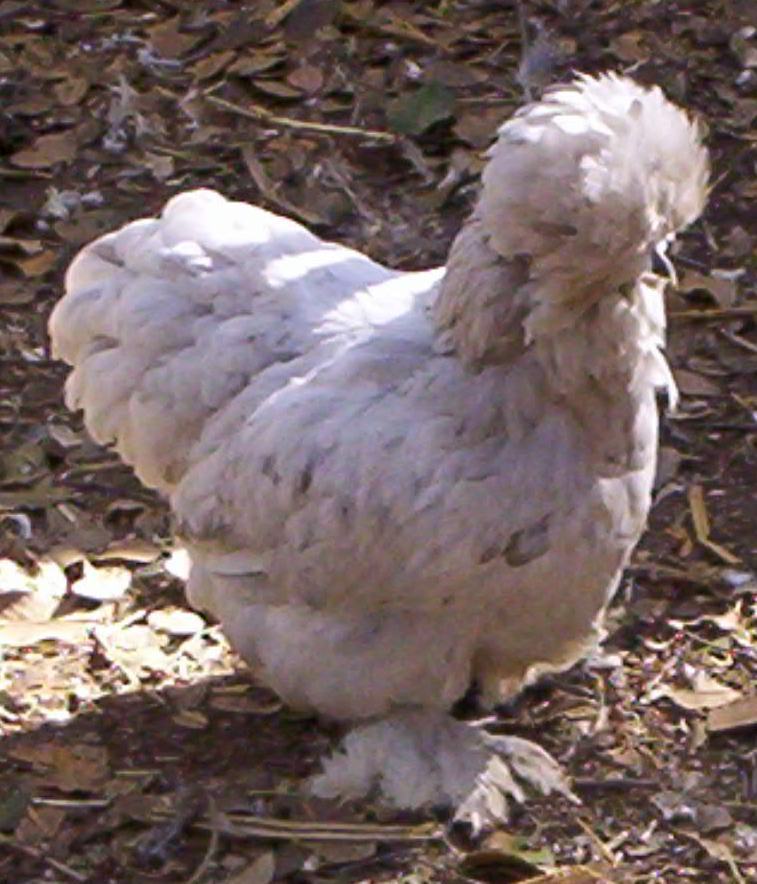Quote: My commentary was basically just skipping the punnet squares. Let's take a look at them:
1. F F 2. F f 3. f f 4. F f 5 f f 6. Fm Fm 7. fm fm
F FF FF
F FF Ff
F Ff Ff
F FF Ff
F Ff Ff
fm Fm fm Fm fm
fm fm fm fm fm
F FF FF
F FF Ff
F Ff Ff
f Ff ff
f ff ff
fm Fm fm Fm fm
fm fm fm fm fm
1. Two birds that are homozygous (two copies) of frizzle will always produce homozygous offspring.
2. One homozygous for frizzle bird bred to a heterozygous bird will produce 50% homozygous, 50% heterozygous
3. One homozygous for frizzle bird bred to a homozygous not-frizzle bird will produce all heterozygous frizzles.
4. Two heterozygous for frizzle birds will produce 25% homozygous frizzle, 25% homozygous not-frizzle and 50% heterozygous frizzle
5. One het. frizzle bred to hom. not-frizzle
6. hom. mod frizzle bred to hom not-mod frizzle
7. hom mode frizzle bred to hom mod frizzle
Quote: In general, you are correct, except that the modifier gene essentially unfrizzles a frizzle. A bird with the modifier gene and one copy of frizzle may appear to be slightly frizzled or not frizzled at all (although it generally shows as chicks are first getting the curve to their feathers, and then as the plumage grows in, it disappears.) A bird with the modifier gene and two copies of frizzle will appear like a normally frizzled bird. Since the modifier gene is recessive, a bird must have two copies for it to have any effect.
So, a bird that is F/f fm/fm might well appear smooth, but can pass frizzle on io its offspring, and if they do not receive two copies of the modifier gene, will be frizzled.
A bird that is F/f fm/fm will look like a normal frizzle, and will not have excessively brittle feathers like they would without the modifier gene. All their offspring will inherit frizzle.













